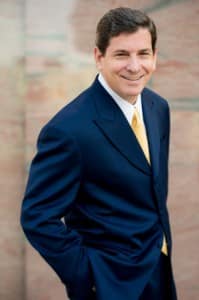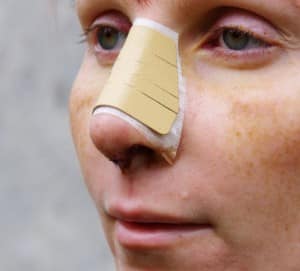History of Plastic Surgery
 When we think of plastic surgery procedures we most often have the latest, most cutting edge procedures in mind, where the skilled plastic surgeon can restore functionality to a suffering patient or erase the visible signs of the aging process. We hear of constant advancements in the field of plastic surgery and the popularity of plastic surgery procedures drives medical research in the area forward to achieve better, safer and more aesthetically pleasing results. In a medical area that looks constantly ahead we sometimes forget that plastic surgery has an almost 200 year history in Western medicine and its roots can be traced much further back in the East.
When we think of plastic surgery procedures we most often have the latest, most cutting edge procedures in mind, where the skilled plastic surgeon can restore functionality to a suffering patient or erase the visible signs of the aging process. We hear of constant advancements in the field of plastic surgery and the popularity of plastic surgery procedures drives medical research in the area forward to achieve better, safer and more aesthetically pleasing results. In a medical area that looks constantly ahead we sometimes forget that plastic surgery has an almost 200 year history in Western medicine and its roots can be traced much further back in the East.
The earliest reference to plastic surgery procedures can be found in an Ancient Egyptian medical text dating back to 3000 BC, describing the repair of a broken nose. Ancient Romans also knew how to utilize plastic surgery techniques as recorded by Roman scholar Aulus Cornelius Celsus in the first century. Reparative methods were also used in India as early as 800 BC and cataract surgeries, aimed at helping patients restore their sight, were also performed from the 6th century BC. It is this revolutionary work in the field of plastic surgery that was carried out by Indian healers that was first recorded in writing and can be viewed as a set of detailed medical descriptions in its own right. The original Sanskrit texts were soon translated to Arabic and spread across the Asian continent and Europe during the Abbasid Caliphate in 750 AD. The first Europeans who made use of these early plastic surgery techniques were the Italian Branca family in Sicily.
Compared to the East, Western medical practice lagged behind in the field of plastic surgery (and surgery in general). The earliest record of plastic surgery in the West dates back to 1794 when the British Gentleman’s Magazine published an article on the innovative rhinoplasty procedures of Indian medics. It was on the wings of this article that Englishman Joseph Constantine Carpue, a popular lecturer in anatomy and a skilled surgeon travelled to India to devote 20 years of his life studying the traditional Indian rhinoplasty method which involved using a piece of skin taken from the patient’s forehead to form a nose. Upon his return to England Carpue performed the first plastic surgery procedure of the West – a rhinoplasty using ancient Indian techniques. Carpue’s patient was a soldier whose nose has been destroyed by a previous mercury treatment. Carpue was so stunned by the success of the operation that when the bandages were removed from the patient’s nose he reportedly exclaimed: “My God, there is a nose.” Though the surgery was widely proclaimed an overwhelming success it is painful to imagine what Carpue’s patient must have endured during a surgery that did not include any anesthesiology (in the modern sense of that word).
Another great innovator in the field of plastic surgery was Karl Ferdinand von Graefe, a German surgeon who became director of the ophthalmological institute at the University of Berlin in the early 1800s. Graefe was also inspired by the soldiers who often suffered terrible injuries and needed reconstructive plastic surgery to drastically improve their quality of life. Graefe performed several rhinoplasty procedures and is generally recognized as the founder of German rhinoplastic surgery. He also performed the first corrective surgery on a cleft palate patient and experimented with eyelid surgery. Though Graefe’s contribution to plastic surgery is immense, it is worth pointing out that he was very much a man of his time. It was Graefe who coined the term “plastic” in relation to reconstructive surgery, taking it from the Greek word for giving form (plastikos).
As anesthesia techniques and hygiene practices developed during the late 19th century, an American surgeon, John Orlando Roe performed the first non-reconstructive nose job. This was a significant step for the history of plastic surgery as up until that point all plastic surgery procedures were aimed at restoring functionality and were much less concerned with the physical appearance of the patient. Following in Roe’s footsteps, Germans surgeon Eugen Hollander is believed to be the first doctor ever to perform a purely cosmetic face lift. In 1901 Hollander was the first to cut the skin around and under the ears to smooth out any lines or wrinkles.
In an unfortunate twist of fate it was the two World Wars of the twentieth century that brought the most advances to the field of plastic surgery. The terrible injuries suffered by WWI patients spurred surgeons to seek innovative medical solutions and it was during this time that plastic surgeons formed their first professional associations and boards. The horrors of WWII meant further advances for plastic surgery; most famously it was during this time that extensive skin burns were first treated with skin grafts. These methods were further refined and finally integrated into the classical canon of plastic surgery and from the 1960s onwards plastic surgery was marketed to patients looking to improve their appearance and erase the signs of aging.
Dr. Warren Lent is a double board certified Beverly Hills plastic surgeon who makes use of all the latest technologies and innovations in plastic surgery to make his patients’ experiences as painless and comfortable as possible. He is available for consultation on all forms of plastic surgery at his office in Beverly Hills.



 Thigh lift surgery is a plastic surgery solution to sagging excess skin around the thigh area. The plastic surgery aims to give a smoother and tighter contour to the thigh region by removing excess skin and in some cases excess fat tissue. It is important to stress that a thigh lift involves removal of skin from either the outer or the inner thigh, it is not a liposuction procedure aimed at removing fat tissue only. However, it is possible to combine a thigh lift procedure with liposuction for more pronounced results.
Thigh lift surgery is a plastic surgery solution to sagging excess skin around the thigh area. The plastic surgery aims to give a smoother and tighter contour to the thigh region by removing excess skin and in some cases excess fat tissue. It is important to stress that a thigh lift involves removal of skin from either the outer or the inner thigh, it is not a liposuction procedure aimed at removing fat tissue only. However, it is possible to combine a thigh lift procedure with liposuction for more pronounced results.  After researching the plastic surgery procedure, finding a suitable, board certified plastic surgeon such as Beverly Hills plastic surgeon Dr. Warren Lent and having an in-depth consultation about the surgery plan, possible risks and side effects and recovery time, plastic surgery patients often feel that they have looked up and asked all possible questions to do with the actual procedure. Once the plastic surgery procedure date is set, patients suddenly remember that there are logistical considerations to think about ranging from “How to prepare for plastic surgery?” and “Arrangements with work and other permanent commitments” to “What to bring with me on the day of plastic surgery?”
After researching the plastic surgery procedure, finding a suitable, board certified plastic surgeon such as Beverly Hills plastic surgeon Dr. Warren Lent and having an in-depth consultation about the surgery plan, possible risks and side effects and recovery time, plastic surgery patients often feel that they have looked up and asked all possible questions to do with the actual procedure. Once the plastic surgery procedure date is set, patients suddenly remember that there are logistical considerations to think about ranging from “How to prepare for plastic surgery?” and “Arrangements with work and other permanent commitments” to “What to bring with me on the day of plastic surgery?”  Hospitals, outpatient plastic surgery center or a doctor’s office?
Hospitals, outpatient plastic surgery center or a doctor’s office? Potential plastic surgery patients should take a number of factors in consideration when choosing their procedure and clinic. Of course it is of paramount importance that the best and latest plastic surgery techniques and methods should be used and that the consultation should be thorough and detailed. Patients should also consider the costs involved in the planned procedure including the time lost from work during the recovery period. The most important factor, however, is to choose the right Beverly Hills plastic surgeon.
Potential plastic surgery patients should take a number of factors in consideration when choosing their procedure and clinic. Of course it is of paramount importance that the best and latest plastic surgery techniques and methods should be used and that the consultation should be thorough and detailed. Patients should also consider the costs involved in the planned procedure including the time lost from work during the recovery period. The most important factor, however, is to choose the right Beverly Hills plastic surgeon. What do people consider when they plan on having a plastic surgery procedure?
What do people consider when they plan on having a plastic surgery procedure? What is revision rhinoplasty?
What is revision rhinoplasty?